#Francesco Griffo da Bologna
Text
Books On Books Collection - Golnar Adili
Books On Books Collection – Golnar Adili
Baabaa Aab Daad (Father Gave Water) (2020)
Baabaa Aab Daad (Father Gave Water) (2020)Golnar AdiliWood, felt, board and cloth, 5 x 7 x 1.5 inches (closed), Edition of 25. Acquired from the artist, 1 July 2022Photos: Books On Books Collection unless indicated otherwise. Displayed with artist’s permission.
Helpfully for a Western audience, the box cover of this homage to the traditional Persian…
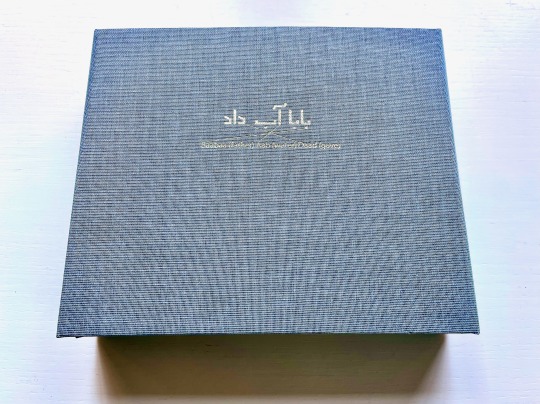
View On WordPress
0 notes
Text
What is the history of the bembo typeface

In France, his work inspired many French printers and punchcutters such as Robert Estienne and Claude Garamond from 1530 onwards, even though the typeface of De Aetna with its original capitals was apparently used in only about twelve books between 14. The type is sometimes known as the "Aldine roman" after Manutius' name. Modern font designer Robert Slimbach has described Griffo's work as a breakthrough leading to an "ideal balance of beauty and functionality", as earlier has Harry Carter. One of the main characteristics that distinguished Griffo's work from most of the earlier "Venetian" tradition of roman type by Nicolas Jenson and others is the now-normal horizontal cross-stroke of the "e", a letterform which Manutius popularised. Griffo was one of the first punchcutters to fully express the character of the humanist hand that contemporaries preferred for manuscripts of classics and literary texts, in distinction to the book hand humanists dismissed as a gothic hand or the everyday chancery hand. This book, usually now called De Aetna, was a short 60-page text about a journey to Mount Etna, written by the young Italian humanist poet Pietro Bembo, who would later become a Cardinal, secretary to Pope Leo X and lover of Lucrezia Borgia. His first printing in the Latin alphabet, in February 1496 (1495 by the Venetian calendar), was a book entitled Petri Bembi de Aetna Angelum Chabrielem liber. Manutius at first printed works only in Greek. These were used as a master to stamp matrices, the moulds used to cast metal type. Griffo, sometimes called Francesco da Bologna (of Bologna), was an engraver who created designs by cutting punches in steel. The regular (roman) style of Bembo is based on Griffo's typeface for Manutius. This section is engraved as a simulation of Tagliente's handwriting other parts were set in a typeface of similar design. Giovanni Antonio Tagliente's 1524 writing manual, which inspired Bembo's italic. Bembo has been released in versions for phototypesetting and in several revivals as digital fonts by Monotype and other companies. Prominent users of Bembo have included Penguin Books, the Everyman's Library series, Oxford University Press, Cambridge University Press, the National Gallery, Yale University Press and Edward Tufte. Since its creation, Bembo has enjoyed continuing popularity as an attractive, legible book typeface. Monotype also created a second, much more eccentric italic for it to the design of calligrapher Alfred Fairbank, which also did not receive the same attention as the normal version of Bembo. It followed a previous more faithful revival of Manutius's work, Poliphilus, whose reputation it largely eclipsed. Monotype created Bembo during a period of renewed interest in the printing of the Italian Renaissance, under the influence of Monotype executive and printing historian Stanley Morison. The italic is based on work by Giovanni Antonio Tagliente, a calligrapher who worked as a printer in the 1520s, after the time of Manutius and Griffo. Bembo is named for Manutius's first publication with it, a small 1496 book by the poet and cleric Pietro Bembo. It is a member of the " old-style" of serif fonts, with its regular or roman style based on a design cut around 1495 by Francesco Griffo for Venetian printer Aldus Manutius, sometimes generically called the "Aldine roman". Bembo is a serif typeface created by the British branch of the Monotype Corporation in 1928–1929 and most commonly used for body text.

0 notes
Text
Chapters 5-8
So reading these chapters gave me an entirely different feel. I found myself trying zoom all the way in to read or at least clearly see with detail the different examples/displays of work in the text.
I think my readings made understand the importance of different time periods as it relates to graphic design. It also made me home in more of the different designers and their impact to the world of graphic design.
Very early in the readings of Chapter 5, it discuss typography. The invention of typographic was compared to writing as one of the most important advances in civilization. In the previous post, we see how important writing is and its impact on world. There was also start a change world over with the use of paper. Paper was created by the Chinese and was distributed by the Chinese for a while until other countries found a way to create their own. Along with the spread of paper was the spread of block printing in Europe. Though block printing had made it to Europe, block printing remained popular mostly in China. The importance of printing is evident in chapter 6. Printing is an extension of typography (writing) because like the typography or writing, it stabilized and unified languages. The impact of printing led to revolution because printing is a powerful tool to spread ideas and information. Learning the difference between broadside and broadsheet was interesting because I’m not sure why would anyone would ever only want to use one side of a canvas. Broadsheets were useful announcements of deformed births (which is really messed up. Why is this an announcement? What about the families?),advertisement, the lottery, politics, invasions, disasters, and, of course, religion. :-) The broadsides or broadsheets evolved over time from the folded sheets to some things that we are familiar with today such as pamphlets and newspapers. Chapter 7 details the state of graphic design in the Renaissance period.
The following includes a few of the designers I found to be interesting:
Gutenberg: he was responsible for teaching a secret process for mirror creation; He was responsible for inventing a type mold which allowed him to increase his speed and accuracy;
Erhard Reuwich: Contributed illustrations to the Peregrinationes in Montem Syon (Travels in Mount Zion). Reuwich created illustrations in the form of regional maps, important buildings, and major cities. His contributions made history as the first book to have fold out illustrations.
Albrecht Durer: Is the creator of The Apocalypse and the Rhinoceros. Durer is also a writer and created a book called Underweisung der Messung mit dem
Zirckel und Richtscheyt. This book touch on topics such as linear geometry, two dimensional geometric construction, the application of geometry to architecture, decorating, engineering, geometric solids, linear perspective, mechanical aids, and letterforms. Durer is so awesome, he created grids to assist with drawing and grids are still in use today!
Konrad Sweynheym and Arnold Pannart: created the double alphabet by combining the Roman alphabet with rounded minuscules. These two later designed a full Roman alphabet that is still in use today.
William Caxton: Caxton has a place on this blog because he translated first typographic book in English. :-)
Nicolas Jenson: Talk about perfect timing! This guy capitalized off the death of one person that had a monopoly on printing in Venice (hub). Some of his credits include designing outstanding roman, Greek, and Gothic fonts and published over 150 books. The text provides an example of Jensons publications called Marie virginus secundum consuetudinem romane curie where he displays decorated borders and initial letters reflect illuminated manuscripts.
Erhard Ratdolt: is the creator of the Calendarium by Regiomontanus, second version (that part is important). The Calendarium has sixty diagrams of solar and lunar eclipses. There’s also the three-part mathematical wheel charts. This guy is just awesome for socking it to religion and superstition with science and better help people predict an eclipse.
Francesco da Bologna (Griffo): He had a project called De Aetna. While working on this project, Griffo, produced roman scripts better than Jenson’s work. Griffo’s style was so effective that it remains a model for punch cutters and is still in book text face Bembo today! Griffo also had the brilliant idea to make the ascenders taller to the size of the capitals to provide balance something that the roman font was lacking.
Geoffroy Troy: has a ton of accomplishment that as do the previously mentioned individuals. The contribution that make him stand out from the rest is his introduction to the apostrophe, the accent, and the cedilla. He also created a series titled Horae. This gave Tory influence because of his work, so much so that King Francis named him imprimeur du roi (printer to the king). He is also named the most influential graphic designer of his century.
Oronce Fine: a mathematic professor and graphic artist. He combined his skills in both math and graphic design to illustrate math, geography, and astronomy. Being able to crossover into multiple field, put him on this list.
There were a few events/designs/time periods I found to be interesting as well:
Psalter: The first book that has the printers trademark and imprint, printed date of publication, and colophon.
Rationale Divinorum Officirum: The first book to save space by use of small sized typestyle.
Incunabula period: There were over thirty-five thousand editions-a total of nine million books-were printed.
Rhinoceros: Is a woodcut illustration from a sketch and description sent from Spain. Though the illustration fills the entire frame and it doesn’t have a defined background, I’m actually ok with that. Viewer can instantly forget that they don’t know where the rhino is standing because of the detail in the illustration.
The Apocalypse: (I’m in love this work. I just appreciate the detail considering that the technology that is around today was not available.) Durer earned his renown in Europe because of the volume and depth, light and shadow, texture and surface in this work.
De Natura Stirpium Libri Tres: is work completed by Simon de Colines. This one particularly stood out to me because it emphasized the title by making the rest of the cover busy and leaving the title in a blank space in the center. This is also another one that captures me with all of the details.
Some things that I wanted to take note of particularly about religions impact on graphic design (everything!!!!):
The text speak of how Pope Nicholas V issued a pardon of sins to all Christians who had given money to support the war against Turks.
The text speak of censorship and how difficult it was to control in the 1500′s. The only entities (ever) interested censoring anyone is the church and the state. Pg112 in the text.
See ya next time :-)
1 note
·
View note
Text
Research: Origin and Inspo for EB Garamond
One of the mentioned inspirational material for the older Garamond typefaces is tracked back to the Egenolff-Berner specimen sheet (1592):

Aldus Manutius

It was mentioned that Claude Garamond based his inspiration from Aldus Manutius’ type (Renaissance Venice).
The leading figure of his time in printing, publishing, and typography, founder of a veritable dynasty of great printer-publishers, and organizer of the famous Aldine Press. Manutius produced the first printed editions of many of the Greek and Latin classics and is particularly associated with the production of small, excellently edited pocket-size books printed in inexpensive editions.

^Roman type used by Aldus Manutius the Elder in De Aetna by Pietro Bembo, Aldine Press, Venice, 1495 (twice actual size).

^ Italic typeface: Dedication page from the first book to incorporate italic typeface, Virgil's Opera, printed by Aldus Manutius the Elder in Venice in 1501.
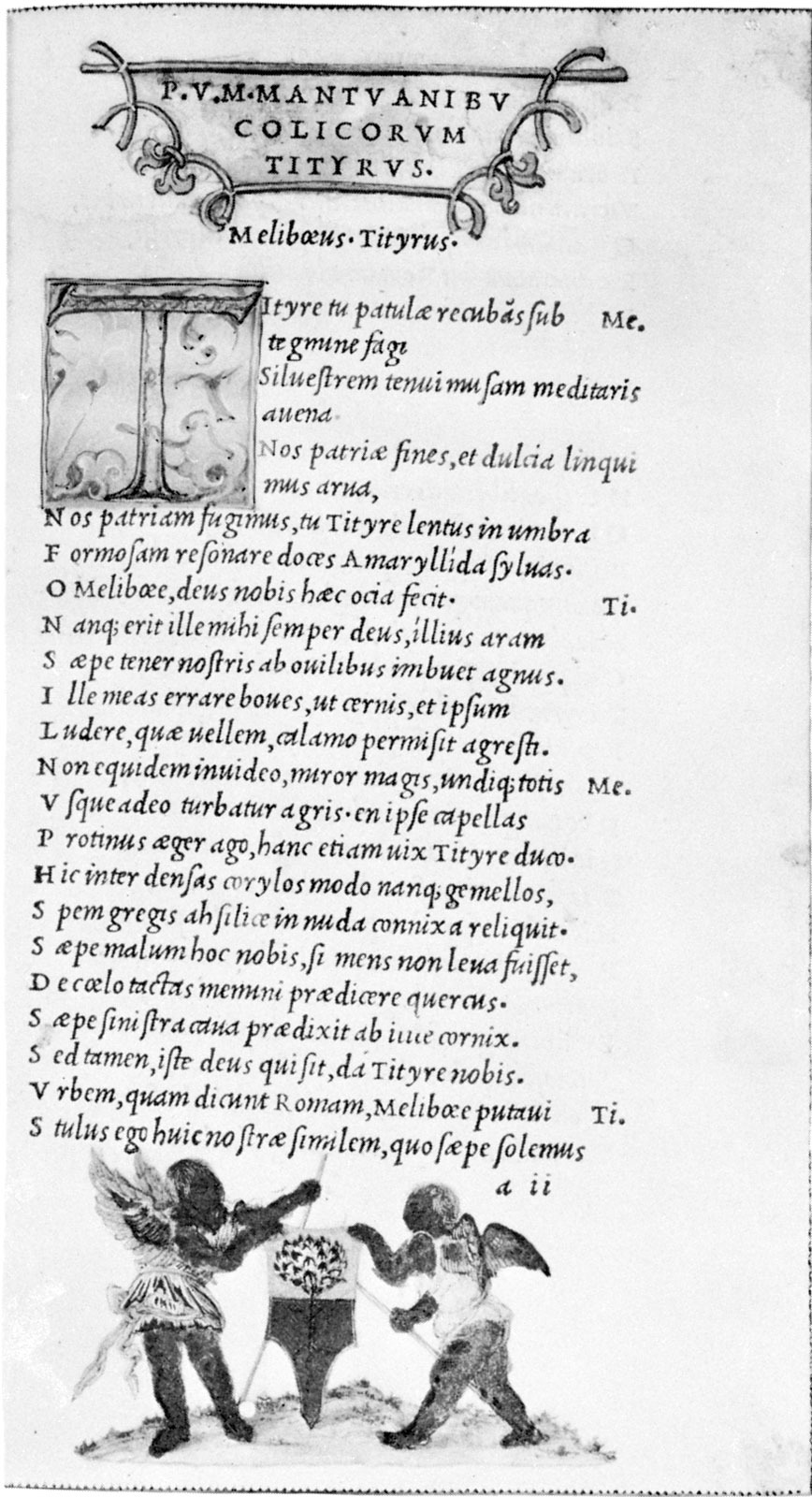
^ The first page of Virgil's Opera, the first book to incorporate italic typeface, printed by Aldus Manutius the Elder in Venice in 1501.
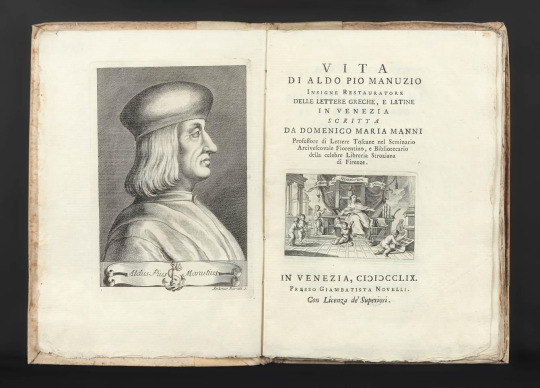
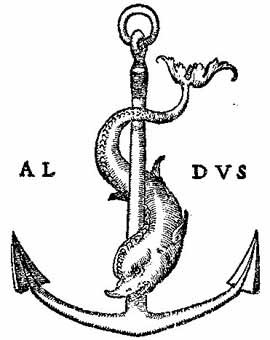
^THE DOLPHIN AND ANCHOR DEVICE, SYMBOL OF THE ALDINE PRESS
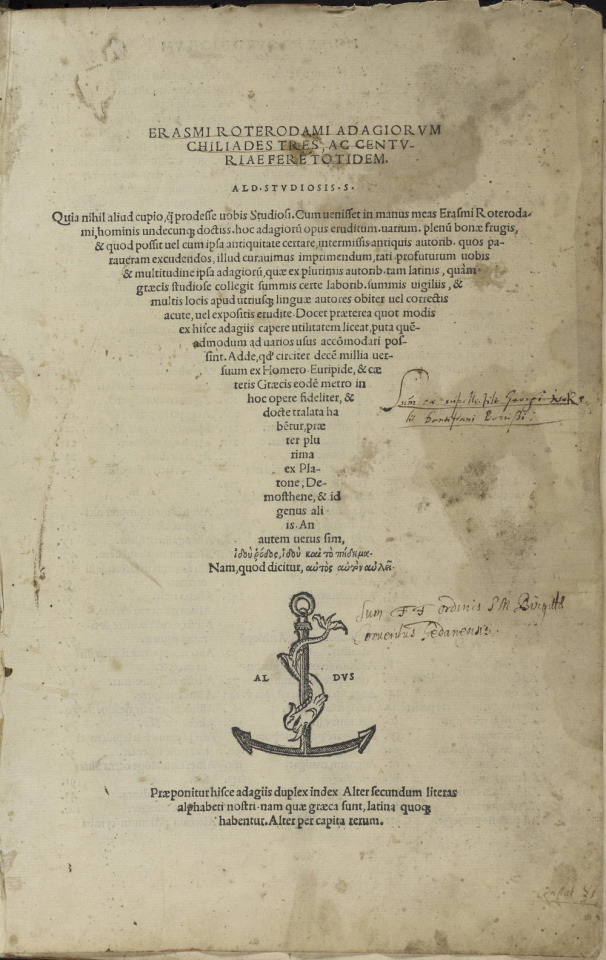
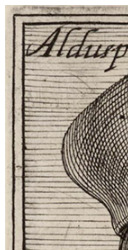
^The framing and hatch lines can serve as a point of inspiration for the animation.
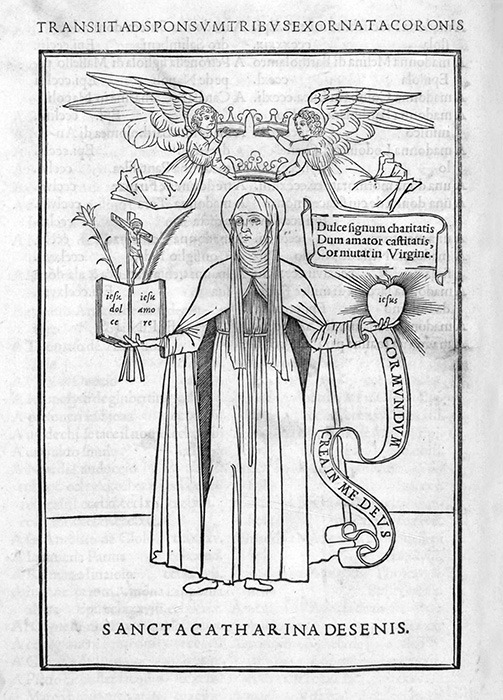
Epistole di santa Caterina da Siena, published by Aldo Manuzio, 1500 (Biblioteca Universitaria di Bologna). This is the first example of italic type (printed within the book on the left), which was developed for Manuzio by the typographer Francesco Griffo.

Sophocles, Tragaediae septem cum commentariis, 1502, published by Aldo Manuzio (Biblioteca Universitaria di Bologna).
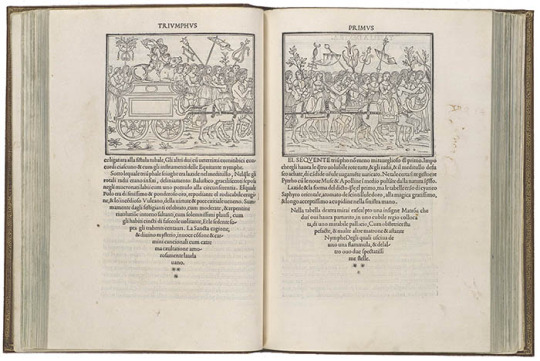
Francesco Colonna, Hypnerotomachia Poliphili, published by Aldo Manuzio, 1499, book with woodcut illustrations, 29.5 × 22 × 4 cm (The Metropolitan Museum of Art)
0 notes
Photo
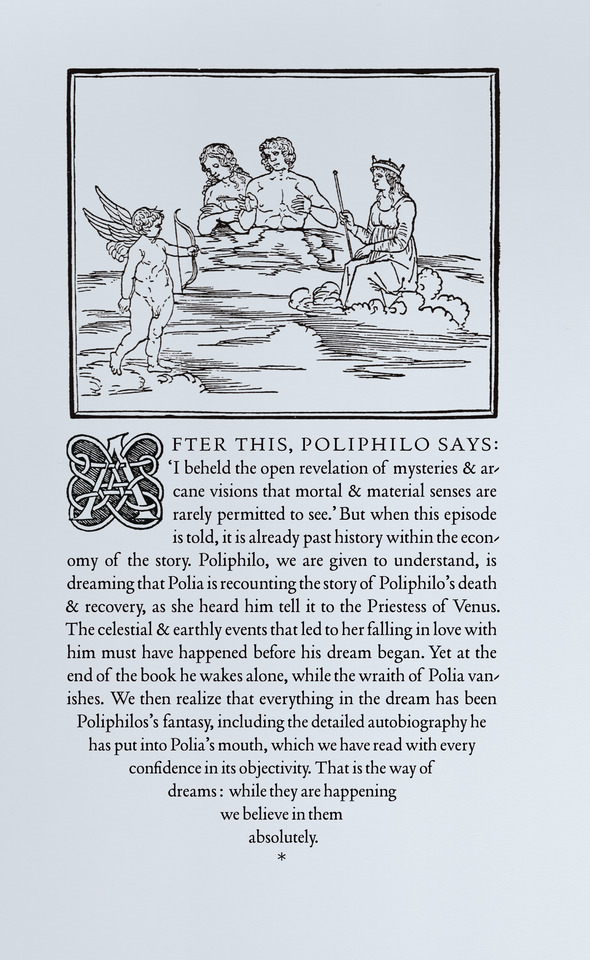
poor poliphilo
text from joscelyn godwin’s introduction to his english translation, from the ornate italian, of francesco colonna’s Hypnerotomachia Poliphili [thames & hudson, london, 1999, p xiii]. set in digital reissue of monotype poliphilus , the 1923 recutting [english monotype 270] of the third aldine roman, cut by francesco griffo da bologna; & first shown in the Hpynerotomachia Poliphili (english: Poliphilo’s Strife of Love in a Dream) by francesco colonna [aldus manutius, venice, 1499].
9 notes
·
View notes
Text
Το ελληνικό βιβλίο. Μια ιστορία 539 ετών
Το ελληνικό βιβλίο. Μια ιστορία 539 ετών
—της Ελένης Κεχαγιόγλου—
To έντυπο βιβλίο γιόρτασε φέτος αισίως τα 569 του χρόνια, καθώς —κι αν η τυπογραφία με κινητά μεταλλικά στοιχεία πρωτοεμφανίστηκε τον 11ο αιώνα στην Κίνα— η τυπογραφία που σφράγισε τον ευρωπαϊκό πολιτισμό δεν γεννήθηκε παρά στα μέσα του 15ου αιώνα στη Μαγεντία (Μάιντς) της Γερμανίας από τον Ιωάννη Γουτεμβέργιο, ο οποίος το 1445 παρουσίασε την υπέροχη από την άποψη της…
View On WordPress
#Alexander Wilson#Baumeister#Claude Garamont#Firmin Didot.#Francesco Griffo da Bologna#Giambattista Bodoni#Giovannida Reno#Grancesco Griffo#Ioannes Norton#italic#τυπογραφία#Άλδος Μανούτιος#Άνθιμος Γαζής#Έρασμος#Όθων#Ύμνος εις την Ελευθερίαν#Αριστοφάνης#Αδαμάντιος Κοραής#Αλέξανδρος Μαυροκορδάτος#Αναστάσιος Κωνσταντινίδης#Ανδρέας Κορομηλάς#Ανδρέας Κουνάδης#Βίβλος#Βιτσέντζα#Βιβιλιοθήκη St. Bride#Βιβλιοθήκη της Βουλής των Ελλήνων#Γρηγόριος Ε&039;#Γαλάτεια Καζαντζάκη#Γεώργιος Βεντότης#Γεώργιος Κασδόνης
0 notes
Text
Books On Books Collection - Roberto de Vicq de Cumptich
Books On Books Collection – Roberto de Vicq de Cumptich
Bembo’s Zoo: An Animal ABC Book (2000)
Bembo’s Zoo: An Animal ABC Book (2000)Roberto de Vicq de CumptichHardback. H222 x W340 x D1.0 mm, 32 pages.
Each animal is drawn using the Roman letters of the Bembo font family, based on a letter cut by Francesco Griffo (1450-1518) for the Venetian printer for Aldus Manutius (1450-1515) and named after the prolific Renaissance scholar Pietro Bembo…

View On WordPress
#Aldus Manutius#Francesco Griffo da Bologna#Pietro Bembo#Roberto de Vicq de Cumptich#Stanley Morison
0 notes
Text
Books On Books Collection - Heavenly Monkey
Books On Books Collection – Heavenly Monkey
Francesco Griffo da Bologna: Fragments and Glimpses (2020)



Francesco Griffo da Bologna: Fragments and Glimpses (2020)
Rollin Milroy
H234 x W159 mm, 114 pages. Edition of 50, of which this is #32. Acquired from Heavenly Monkey, 4 November 2020. Photos: Books On Books Collection.
Several collections of Aldine volumes made themselves known around 2015, the 500th anniversaryof the death of Aldus…
View On WordPress
#Adamo Rossi#Aldus Manutius#Alfred Pollard#Antonio Panizzi#Bodil Rosenberg#Daniel B. Updike#David Pottinger#Emilio Orioli#F.J. Norton#Francesco Griffo da Bologna#Giacomo Manzoni#Giovanni Mardersteig#Giuseppe Fumagalli#Jacqueline Rush Lee#Joseph Blumenthal#Nicolas Barker#Ovid#Peter Koch#Philip Meggs#Pietro Bembo#Robert Bringhurst#Rollin Milroy#Russell Maret#Stanley Morison
0 notes